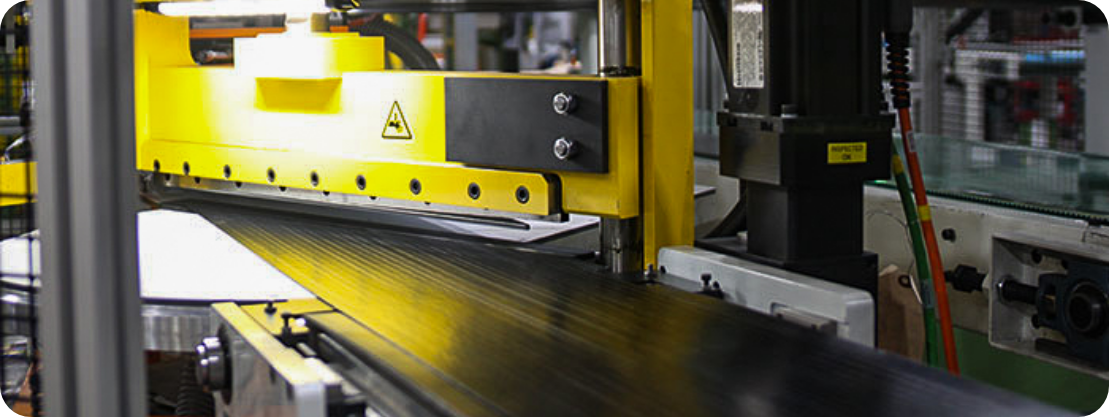
Traditionally, tire components were manufactured through a calendaring process. In this process, a sheet of individual cords or fabric is stretched out at length and coated with rubber. The rubber, which rests on the cords or fabric, moves through wide rollers and is pressed into one infused sheet of rubberized reinforced material. For years tire manufacturers have used this production method. Until calenderless tire manufacturing came along.
Calenderless tire manufacturing, on the other hand, relies on extruded rubber and the fundamentals of lean manufacturing. Rubber is pushed by a screw through a temperature controlled barrel and then joined with individual cords to create a laminated reinforced material.
Steelastic has led the design and production of tire equipment around the world. They specialize in the calenderless tire manufacturing process, which includes extruded tire components such as belt systems, body ply and cap strip and more.
There are many advantages of calenderless tire manufacturing, but it can be summed up in one word: efficiency.
The calenderless system is more automated. This ensures a higher consistency of quality and also means that less manual labor is required.
As production demands change, a calenderless system makes it easy to manufacture shorter runs while still remaining profitable. Whether you’re testing a new tire or changing production often due to high SKU demand, with a calenderless system, you won’t waste time or materials on excess tire components. You can be sure you hit production levels with precision that maximizes your profit.
Ready for the next step? We’ll help you move forward.
Whether you are hearing about calenderless process for the first time or you’re ready to implement it in your own plant, we can help drive your business forward. Contact us to learn how your plant might benefit from Steelastic’s Calenderless manufacturing process.